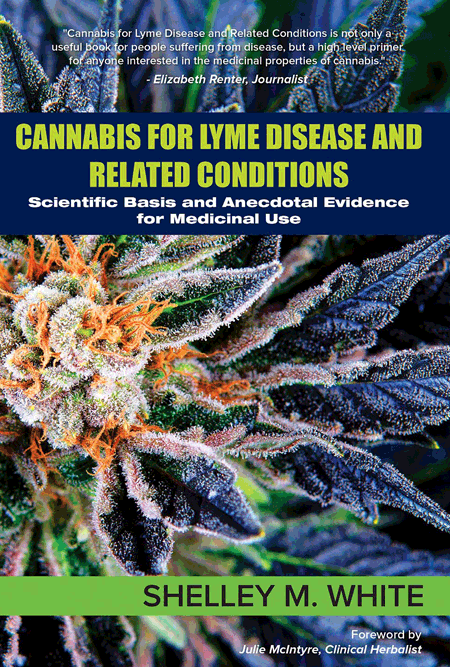Cannabis for Lyme Disease – Scientific Basis and Anecdotal Evidence for Medicinal Use
Reviewed By: Dorothy Kupcha Leland, LymeDisease.org
In my role as a Lyme disease advocate and support group leader, I regularly hear from people who are sick and suffering and kicked to the curb by the medical establishment. Many are afflicted with serious pain, seizures, nausea, insomnia, or other intractable manifestations of Lyme. Those who have the resources to see a Lyme-literate practitioner may find relief after treatment—though not always. And many others have no access to Lyme-literate care whatsoever. (For more information about why, see our coverage of the IDSA’s stranglehold on Lyme diagnosis and treatment.)
I have no personal experience with medical marijuana. But more and more, I’m hearing from Lyme patients who have tried it for sleeplessness, pain, and other symptoms. Many people say it helps them significantly. Others report no change at all. However, as medical marijuana becomes more available, I also hear from many patients seeking specific information about using pot for Lyme disease.
Because medical marijuana is legal in some places and not in others, the whole area is murky. There are bits and pieces of information floating around on the Internet, but no place that pulls it all together specifically for tick-borne disease. Thus, Lyme patients who do choose to try pot are pretty much flying blind.
A new book, Cannabis for Lyme disease and related conditions, hopes to fill the information gap. Author Shelley White, now publisher and editor of the magazine Public Health Alert, suffered serious Lyme symptoms for many years. Then, she tried cannabis oil, an extract of the marijuana plant.
White does not call the substance a “cure” for Lyme disease, but states, “Cannabis oil greatly reduced the severity of my symptom picture and improved my quality of life while going through Lyme treatment.”
This experience prompted her to learn more about the medical use of marijuana and produce this book to help inform other people with Lyme.
She explains the chemical make-up of cannabis, its different strains, and various ways it can be taken. She discusses the use of cannabis with assorted Lyme symptoms, along with safety issues and legal concerns. She cites scientific research. An appendix includes first-hand accounts by people who have successfully used pot for Lyme disease.
I do not give medical advice and I am not suggesting that the reader try marijuana. However, if you do plan to try treating Lyme with pot, I suggest you do your homework first. And part of that would include reading this book.


















